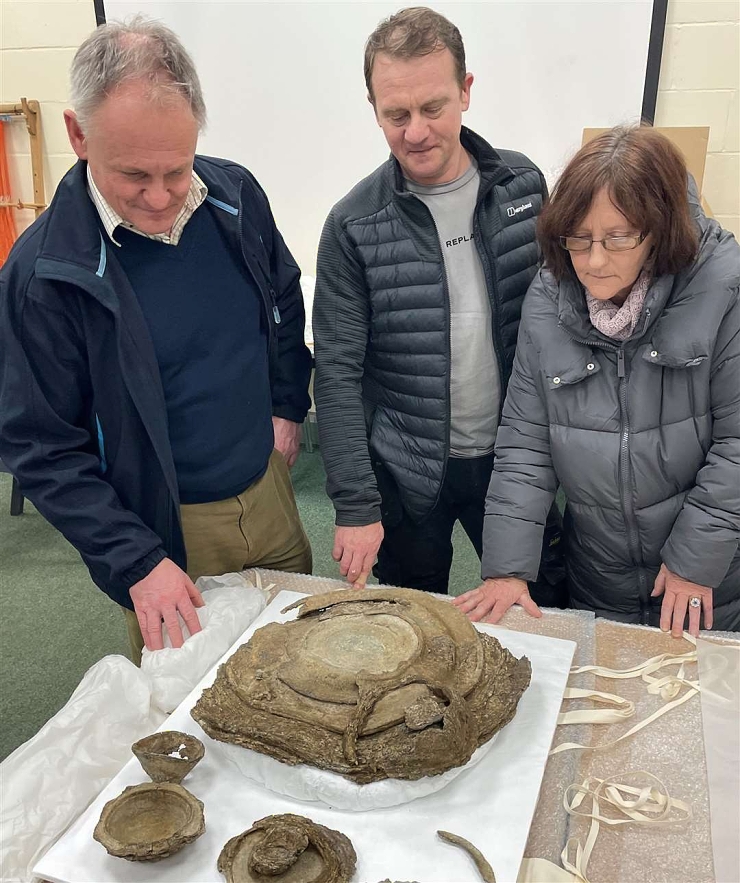Dobré počtení 
Detectorist in England finds 1,600-year-old Roman pewter utensils
Categories: Nálezy nejenom s detektorem ve Velké Británii a Irsku
A rare hoard of Roman pewter ware was discovered during a joint detector club event in a field in Euston, West Suffolk. The assemblage consists of plates, trays with smaller bowls and a cup, and probably dates from the 4th century.
The assemblage was stumbled upon by detectorist Martin White during a joint club search on 3 September last year. He and his colleagues alerted Suffolk County Archaeologists. They discovered on the spot that the assemblage was in such a fragile state that it would need to be collected in a single block for safe removal, documentation and conservation under laboratory conditions.
"I've been searching with a detector for about 10 years and this is the most significant find I've made so far. It was very exciting," said Martin Wihte. "We quickly consulted with the archaeological service so that the objects could be removed and recorded without damage. It was a privilege to be involved in the whole process, from discovery to excavation to the display of the treasure," added the happy finder.
The vessels were placed in the pit and carefully stacked - perhaps as a depot or offering. The Norfolk Museum's laboratory found that the assemblage had been badly damaged by earlier ploughing, and advanced corrosion had fused several pieces of ware together. The main body contained five plates and trays stacked on top of each other. The corroded materials make it impossible to separate this 'assemblage' into individual parts. The upper part of the assemblage is broken, and was partially picked up during its initial discovery, so it was conserved separately.
Next to the plates was a group of bowls, two small bowls in one large bowl on top of each other. One was decorated in relief on the inside of the flat rim. A single inverted bowl was discovered on the side of the assemblage. Next to the set of plates lay a conical cup along with two other bowls with octagonal rims: "This is a significant discovery. The larger plates and trays were used for sharing food and the octagonal bowls may have a Christian reference. Similar treasures have been found throughout southern Britain, including nearby large riversIcklingham and Hockwold," said Faye Minter, Suffolk Council's archaeological archives and projects manager.
As tin is not a precious metal, this find of otherwise inestimable archaeological value cannot be declared treasure under the Treasure Act and therefore belongs to the property owner. The land belongs to the Duke of Grafton who donated the treasure to Euston and the Anglo-Saxon Village Museum at West Stow. The whole collection will be on display to the public until January 2024.
Roman Nemec
Sources: bbc.com, thehistoryblog.com, suffolk.gov.uk

Martin Wihte at the exhibit (centre)

detail in situ

The parts of the vessel were firmly joined together due to corrosion-2m

detail of the decoration on one of the bowls-3M

treasure after conservation

archaeologists retrieving the assemblage
The article is included in categories:



